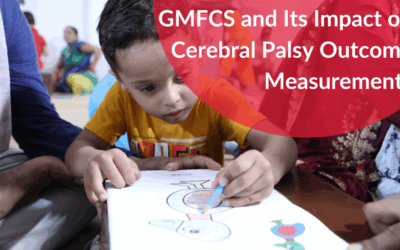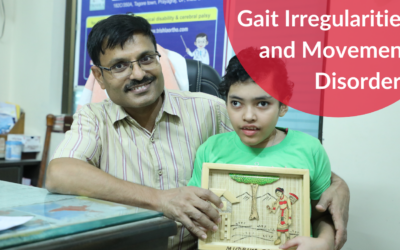Have you ever noticed someone struggling with knees in cross position and legs acting like replacing a pair of scissors? This scissoring type of walking usually results from a medical state called scissor gait. This walking pattern becomes difficult for many people in daily activities because of the complexities brought about by their neurology and muscular factors.
So, why do some people walk like this, and what does it mean when the walk looks, in fact, like a pair of scissors?
In this article, we will have a closer discussion of this particular walking disorder named scissor gait, which is one among many walking disorders. It will also investigate the causative factors for this condition, how it affects the person’s life, and what can be done to make the environment safer or more supportive for those who experience it.
What Are Walking Abnormalities?
Gait Irregularities, also known as gait disorders, are patterns of walking that deviate from the typical heel-to-toe rhythm most people are used to. These abnormalities can affect speed, posture, balance, and movement symmetry.
Some walking differences are temporary, like those following an injury. Others are long-term or permanent, involving conditions affecting the muscles, bones, or nervous system.
Common types of gait abnormalities are;
- Scissor gait
- Spastic gait
- Steppage gait
- Waddling gait
- Ataxic gait
Every type displays its distinct features, causes, and characteristics. Scissor gait is quite unusual because of its distinctive pattern and the neurological conditions associated with it.
Crucial Points in Gait
Scissor gait takes a name from crossing over knees and thighs while walking, very much like the action of scissors opening and closing. The gait typically entails:
- The legs are stiff and turn inward.
- The feet drag or point downward.
- The knees cross anterior to each other.
- There is a narrow base of support during ambulation.
- There is a slow, unsteady gait pattern.
This gait pattern is often seen in children with specific neurological conditions, the most common being spastic cerebral palsy. Over time, the repeated muscle tightness and imbalance lead to consistent changes in gait.
Let us consider a case scenario:
Anaya, 5 years old, starts walking late compared to other toddlers. Her parents noted that she straddled her knees and feet while walking and occasionally stumbled. A pediatric neurologist examined Anaya and diagnosed her with spastic cerebral palsy and scissor gait. Early intervention, therapy, and assistive devices enabled her to enhance mobility and lower the risk of possible complications.
What Causes Abnormal gait?
There are a number of medical determinations that could cause someone to walk in an altered manner. Scissor gait and any abnormalities are typically suggestive of deeper-seated problems with control signals concerning motor function, which must pertain mostly to the nervous or muscular systems. Some common causes are:
- Neurological Disorders
- Cerebral Palsy: This is the primary cause of scissor gait in childhood. There is injury to the brain before or during the time of birth. This injury usually affects tone and control of muscles, leading to scissor gait. In cerebral palsy, important cause of scissor gait is spasticity in muscle specially hip flexor, adductor and medial hamstring muscle, hip subluxation and poor pelvic control. All these factor work in synchronize manner to cause scissoring.
- Traumatic Brain Injury (TBI): Most direct injuries to the brain disrupt gait through loss of coordination and loss of muscle control.
- Spinal cord injury: Destruction of proper signal communication between the brain & muscles can lead to abnormal gait.
- Multiple Sclerosis: Autoimmune disorder affecting the CNS often manifests with muscle stiffness and disorientation.
Walking abnormalities are commonly caused by problems in the structures of the brain, spinal cord, nerves, muscles, or joints. Since walking is a complex act coordinated by many systems, disruption in any of them will affect a particular person’s gait pattern.
How to deal with scissoring:
Scissoring need detail evaluation of patient including x-ray hip joint and physical examination of lower limb along with gait analysis. Most of cases with cerebral palsy need intensive therapy to improve core muscle strength and control on standing and walking. In the cases with hip joint subluxation / dislocation, child may need surgery to put back hip joint in normal place. Sometime only muscle tendon lengthening is suffice for muscle contracture. But whatever we do these children need long term monitoring along with modification at home and assistive devices as per need.
Safe Home Environment Modifications
Living with scissor gait or any gait abnormality can become challenging from a physical standpoint. Simple everyday activities such as crossing from one room into another or maneuvering stairs can become a complex affair with a high risk of falling.
Nevertheless, the conversion of a home into a relatively safe and accessible environment makes an amazing difference. With a little planning and a few modifications, a mobility-impaired person can regain some independence, confidence, and safety in their homes.
Here are some useful and operational interventions that can be put into effect:
Clear Walkways
Enter the simplest alteration that yields the most influence: clear the walking paths of obstacles. Hallways, doorways, and any main walking routes, such as from the bedroom to the bathroom, should be kept free of clutter, stray wires, or furniture that limits access. An open area enables easier passage, especially for people using walkers or crutches.
Non-Slip Flooring
These surfaces provide great hazards to anyone who may have difficulty in balancing or coordinating activities. Smooth or polished flooring ought to be replaced with non-slip alternatives, or at least anti-skid mats and rugs backed with rubber should be used. High-risk areas like bathrooms and kitchens desperately need the non-slip mats to be waterproof and firmly held in position to help prevent slipping incidents.
Proper Lighting
Poor lighting makes even the safest environment dangerous. Bright, even lighting should be installed throughout the home-in stairways, hallways, and entry points. Good motion-detector or night lights in bedrooms and bathrooms will also aid navigation at night, reducing missteps or falls.
Handrails and Grab Bars
Putting handrails on the hallways and grab bars in important areas such as bathrooms would enhance safety tremendously. These supports are mainly attached next to toilets, bathtubs, and showers. They consider helping stability while sitting, standing, or changing direction. They should be installed at the right height and anchored properly to hold body weight.
Assistive Devices
Mobility aids- Whether walkers, crutches, orthotic braces, or cp child wheelchair – individually prescribed for most people usually contribute significantly to enhancing the safety of a person’s movements at home as much as possible. Ask the opinion of the physical therapist before making use of the most suitable assistive devices, then build the house with the facility of using these sorts of devices.
Making a safe home does not necessarily mean radical renovation. Even small, thoughtful things can change attitudes to support every person, including those with scissor gait and other walking disorders, in living a more independent and secure life every day.
Conclusion
Almost everybody walks with ease; for the ones suffering from a scissor gait, each step reflects the power and spirit of the individual walking. This form of walking is a result of neurological and muscular issues that need understanding and nurturing.
With early diagnosis, correct treatment, and the right support, those suffering from related disorders can be helped to attain greater levels of mobility. Organizations like Trishla Foundation help conquer challenges into opportunities.
So, if you or someone around you is finding walking to be an uphill task, do not hesitate to reach out for help. Every step counts!







